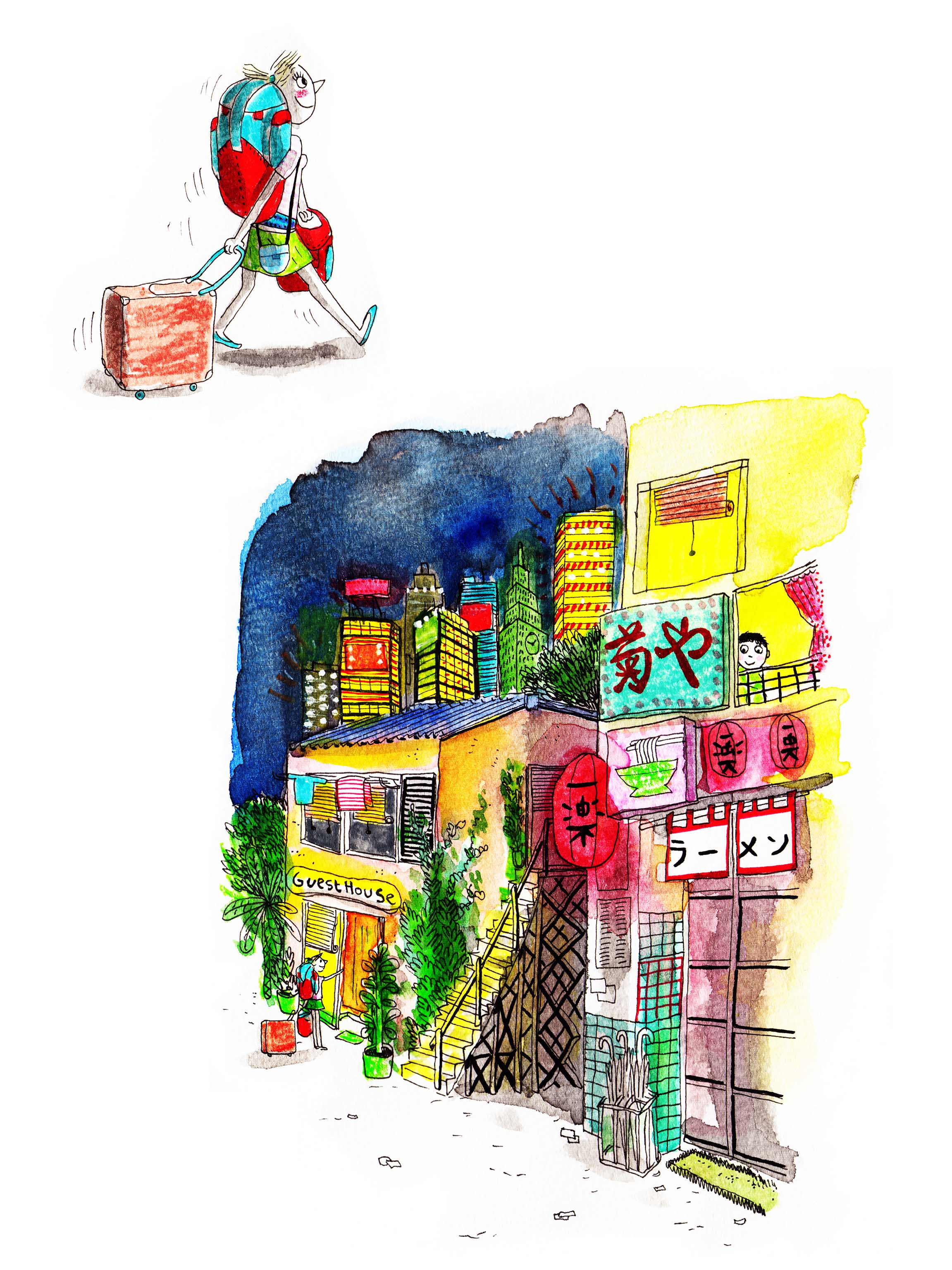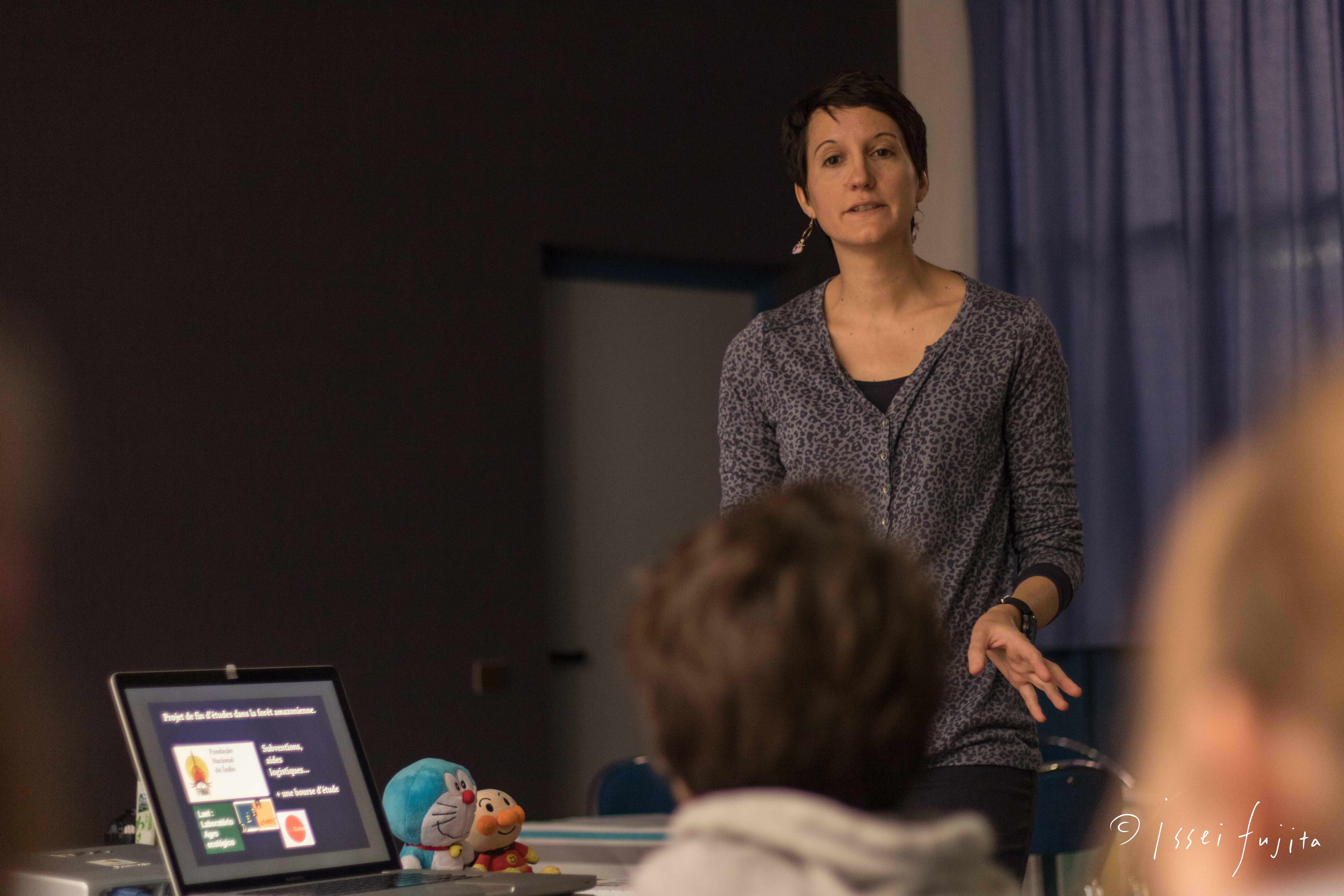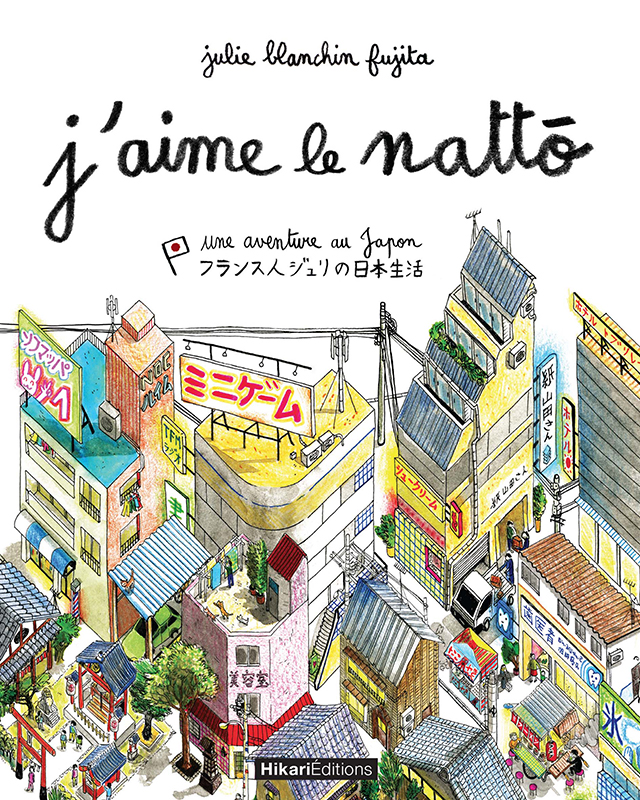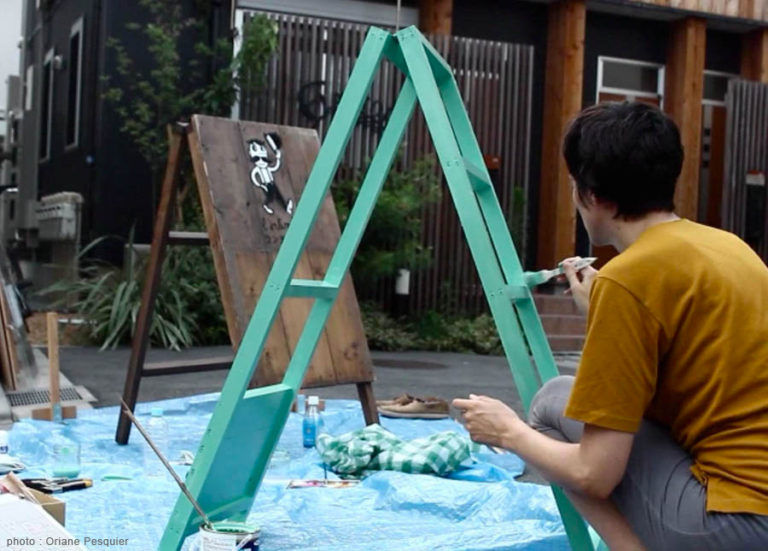This week we’ll be posting our interview with Julie Blanchin Fujita. A French expat, Julie has since married, started her family, and produced a series of buoyant children books that capture her life in Japan. She’s one of the many women you can meet on our tour! Below is the chat we had with this fun, complex and joy-filled artist. You can meet Julie and other women of Japan on the country’s First Feminist Holiday created exclusively by Asia Art Tours
——> asiaarttours.com/tours/a-feminist-holiday-in-japan/
—————————————————————
AAT: How did you become interested in illustration? When did you decide to make it your career?
I draw since I’m a child, once I realize it is possible to earn a living drawing, I ask my parent to study art. My parents always motivated me to do my passion and I am really grateful to them because it is not an easy way.
Once I was graduate, I looked for jobs in illustration/graphic design, I set up projects about documentary books and I start to teach illustration and animation.


– – – –
2. What inspires you about both Japan and France? What are some of your favorite situations or things to draw in both countries?
I always been inspired about travels and explorations. This is what I set up a big project in French Guyana, which become 2 books : I followed french scientists who work on ecological projects in the Amazonia Forest.
I was on the way to make a books series from many scientist and ecological programs from all over the world when I came to Japan. My goal was to meet Japanese scientists, board to South Pole with them and make a documentary illustrated books about this adventure.
Unfortunately, the publisher who was supposed to finance the project give up, even if I was already in Japan!
That’s how I found myself in Tokyo in 2009. Fortunately, life is back on its feet and I found other projects to work on, this is how I started a new life in Japan.
 – – – –
– – – –
3. What similarities and differences do you find between Japanese Illustrations and French Illustrations? Do they have similar or different philosophies?
Historically, Japan is a country where art is part of daily life, unlike France where art was reserved for an elite. This is why nowadays, you can say “I’m doing illustration” or “I’m do graphic design” to a Japanese and there is more chance that he globally understand was is your activity, in contrary to France, where illustration is still an art not really known to the public. People can’t imagine how an illustrator can live by his art.
It’s a bit paradoxical because actually, France is invaded by high quality comic and children books.
 – – – –
– – – –
4. As more and more children are using technology to play games or learn, why is hands-on art important for children?
When music started to be digital in the 2000, people said “record will be die!”. But actually, vinyl record industry is is doing very well! Even if digital music is very convenient and good quality, some music lovers put a lot of money to be able to listen vinyl record, with the special sound you can’t have with digital music.
I think for graphic art, it is the sale thing : paper and painting will never die because you can have feelings and emotions you can’t create with digital industry.

 – – – –
– – – –
5. What are the challenges and rewards of being a ‘foreign’ artist in Japan? Would you define your work as “Japanese”, “French” or neither?
I don’t know if my work is “Japanese”, “French” or neither, may be it would be better to ask the readers of my books to answer this questions.
The thing is, actually I am working not 100%, but essentially for French publishers. I am using my knowledge of Japan to tell stories about Japan for French speaking readers.
Even if I would love to work more with Japanese publishers, but may be later, we can not do everything in the same time!

 – – – –
– – – –
6. Finally what are some of your favorite examples of art and crafts from Japan or France that you like to study or teach?
I would love to study how to make washi paper (Japanese traditional paper)!
About teaching : At the moment, I am doing very small animation movies with young children, if I had more resources, I would love to develop that activity.
For more information on Julie or other amazing female artists email Matt@asiaarttours.com or read more about the tour here—> asiaarttours.com/why-i-created-a-feminist-tour-of-japan-by-asia-art-tours/
